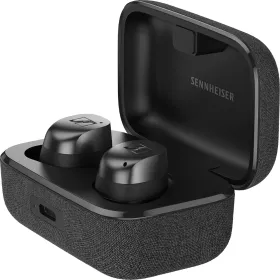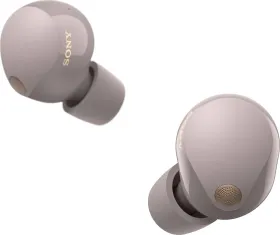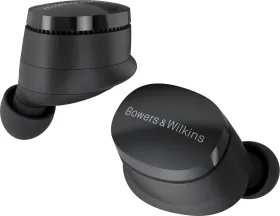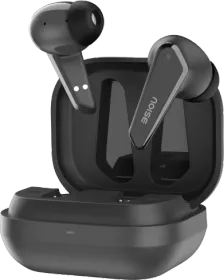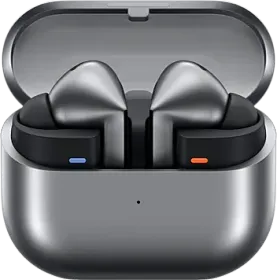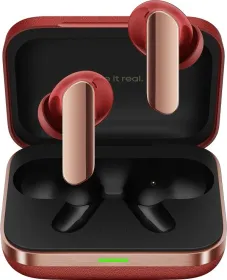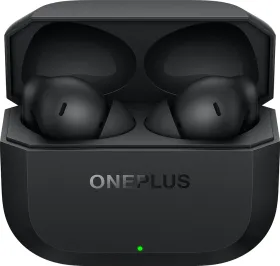For the better part of a decade, buying premium noise-cancelling headphones in India has been about choosing sound quality, battery life, or features like ANC and Transparency Mode. Amid other options, purchasing a Sennheiser has always been the “audio-first” choice, but with its own compromises.
The Momentum 4 Anniversary Edition, however, claims to take a massive leap in terms of design, modern features like Adaptive ANC, and battery life. I’ve spent an exhaustive amount of time with the limited-edition set, trying to figure out how Sennheiser has improved upon its shortcomings. Is this just a collector’s item, or is this the most complete flagship headphone on the market today? Let’s find out.
Sennheiser Momentum 4 Anniversary Edition Price & Availability
The Sennheiser Momentum 4 Anniversary Edition headphones are available on Amazon for Rs. 25,990 in the only 80th Anniversary Limited Edition finish.
Pros
- Excellent sound quality
- Spacious sound stage
- The default sound signature is neutral
- Plush, all-day comfort
- aptX Adaptive codec support
- Reliable multipoint connectivity
- Customizable 5-band EQ
- Effective, pressure-free ANC
- Unique design
- Sound Personalization works well
Cons
- ANC behind Sony, Bose
- Digital-sounding transparency mode
- Thin voice in noisy calls
- Slightly heavier than rivals
- Occasional app connection bugs
- No LDAC or LC3
- Touch controls are overly sensitive
Sennheiser Momentum 4 Anniversary Edition Review: Design & Build

If the standard Momentum 4 is the Clark Kent, the 80th Anniversary Edition is Superman, period; the underlying design and build are identical, but the presentation is a class apart. For the special edition headphones, Sennheiser has collaborated with Bond Truluv, a German graffiti artist.
The Momentum 4 80th Anniversary Edition is a perfect fusion between contemporary design and a bold, edgy “street art” vibe, but it’s not for everyone. While my sister liked the design and said it isn’t like any other headphones she’s seen (take that as an opinion from a regular user), my elder cousin said it is too loud and busy for a premium product, and I secretly agree with him.

The left earcup features Truluv’s signature “throwie” tag in a bubbling font, giving it the appearance of urban concrete, while the right earcup features an abstract design that hides “80” in plain sight through wavy, bendy lines. And yes, the design is embossed on both the earcups, giving it a three-dimensional finish. The headphones look quite dynamic and artistic, but they’re surely not for buyers who prefer a minimal aesthetic for their gadgets.
The ‘L’ and ‘R’ markings on the inside of the earcups are yellow, while the S logo on the headband shines in silver. Speaking of the headband, it is lined with a silicone-like material on the inside, which is also bright yellow as a homage to the iconic Sennheiser HD 414, the world’s first open-back headphones, introduced in 1968.

Now, let’s move on to the build quality, as there’s plenty to talk about there, too. While Sennheiser has used soft-touch textured plastic for the earcup shells, the overall build feels robust and creak-free. The upper side of the headband is covered in a gray-black textured fabric that matches the color of the hard-shell carrying case.
Although I do have some reservations about the material’s long-term ability to repel sweat and oils in the humid Indian weather, it held up pretty well during my testing. The earpads are made from plush, well-cushioned synthetic leather (likely with memory foam), and they’re deep enough that my earlobes don’t rub against the inside of the earcups.

At 293 grams, the headphones are noticeably heavier than the Sony XM6s or the Bose QC Ultra. However, the inner lining of the headband (slightly hard toward the temple but softer on the upper side) does a great job of distributing the weight. I never felt any hot spots of pressure on my head or crown while wearing the device for a couple of hours.
The clamping force is firm for general activity, but I wouldn’t suggest wearing the headphones to a workout. Although the headphones don’t fold inward, they swivel flat (either side) to fit into their sleek, fabric-covered case, which itself feels rigid.

Speaking of the case, the company offers multiple accessories with it, like the 2.5mm-to-3.5mm audio cable, a flight adapter, and the USB-C charging cable, all tucked away in their respective loop cable straps to utilize the space efficiently. Moreover, the Sennheiser Momentum 4 80th Anniversary Edition has a head-turner design that feels as good as it looks.
The only concern I had was the buildup of sweat on the earcup linings after wearing the headphones during brisk walks in the humid months of September in North India.
Sennheiser Momentum 4 Anniversary Edition Review: Sound Quality

This is why you’re here, I know it. Well, to my ears, the Momentum 4 are engaging, technically proficient, and downright musical. The headphones deliver what the company calls Sennheiser Signature Sound, a blend of a mature, refined, and gently W-shaped sound profile out of the box (more balanced than the bass-forward headphones available on the market).
At the core of the Sennheiser Signature Sound experience are the 42mm transducers, which produce close-to-neutral audio with rich details, balanced mids, and a natural soundstage. The output is miles from the bass-first, V-shaped sound of mass-market headphones. But they’re not entirely flat, either; the Momentum 4 offers a gentle W-shaped profile, as it’s still marketed toward regular users and audiophiles alike.

The bass on the Momentum 4 is all about quality, not just quantity. It’s quick and precise, in the sense that it doesn’t stay and overpower other frequencies, i.e., the transient response is excellent. Thanks to the elaborate soundstage, you can easily distinguish the kick drums in the background. However, if you’re accustomed to the thumping and powerful bass, you’d either have to tweak the low-end in the five-band equalizer or enable the “Bass boost” option in the app.
Midrange is the company’s forte, and the same holds true for the Momentum 4. The headphones produce forward, lush, and natural vocals and retain minute details, such as breathwork and vocal fry between phrases. The dreaded sibilance issue doesn’t exist here, or at least none that I could hear. The timbre of instruments like pianos and acoustic guitars also feels spot-on.

While the amount of clarity is impressive, the midrange tuning might come across as a bit too warm or intimate for listeners who prefer a more analytical sound signature. The treble is extended, detailed, and airy. At the same time, it avoids crossing into the over-sharp or painful territory. Ever heard someone say that a new TWS earphone or headphone made them hear new details in old songs? The Momentum 4 has the same potential.
For a closed-back, noise-cancelling headphone, the soundstage is remarkably wide, making you feel as if the music is happening around you in a small room. The imaging is precise, complementing the instrument separation and yielding a three-dimensional, layered output. I wouldn’t say that the music sounds congested, but it might not sound as wide as professional sound monitors. On the positive side, the stereo separation is excellent.

Moreover, the headphones deliver audiophile-grade sound with a pinch of tweaked low end and less sparkle at the top, making it appealing to a broader audience. While they’ll impress most users, purists might immediately dive into the app to adjust the sound.
For those concerned about the call quality, the device does a mixed job at picking up your voice in noisy environments (with its 2×2 digital beamforming MEMS microphones). The other person will hear an aggressively processed version of your voice, and it helps if you speak a tad louder. However, in indoor conditions, the headphones offer clear and crisp audio.
Sennheiser Momentum 4 Anniversary Edition: Adaptive Noise Cancellation

The Momentum 4 offer Hybrid Adaptive ANC, which dynamically adjusts noise cancellation intensity based on your surroundings. In practice, the noise cancellation works well enough to cancel out the swish of passing by traffic (the area around my place gets very busy in the evenings), the low-rumbling sound of a fan, or the constant drone of an air conditioner.
Although I didn’t get a chance to test the headphones on an airplane, I did test them in a car, and they handled the hum of the engine well. Moreover, the Momentum 4 creates a calm, quiet bubble for your music or for times when you need to minimize disturbances.

However, there are times when you’ll notice some sound (particularly the high-pitched ones) bleeding into the headphones. For instance, the loud honking of cars, the constant clacking of mechanical keyboards, or the sound of a baby crying in the market would still cut through more than they do on the flagship Sony or Bose headphones.
It’s safe to say that headphones are a bronze medallist in a race with only four or five entrants. The upside is that the Sennheiser headphones produce noticeably less cabin-pressure feeling, which many users, including me, are sensitive to.

The Transparency Mode, on the other hand, is a clear weak point. While it is still usable for crossing a road and staying aware of surroundings, it doesn’t do as well in conversations. I didn’t notice any audible hiss while using the mode, but the environment sure sounds a bit thin and processed. The Adaptive ANC mode, which is supposed to adjust the intensity of cancellation, often doesn’t kick in while having a conversation.
If the Momentum 4 is a step behind in noise cancellation than the flagship Sony and Bose models, it is definitely two steps behind them in terms of audio pass-through. I’d still prefer the Transparency Mode on my AirPods Pro 2.
Sennheiser Momentum 4 Anniversary Edition: App & Connectivity

With the Momentum 4, you’ll need to download the Sennheiser “SmartControlPus” app to access all the additional features. Credit where due, the app has a clean, user-friendly interface for managing all your Sennheiser devices from one place.
On the Momentum 4 home screen, the app offers the Noise Control section. It lets you switch between the Adaptive noise cancellation mode, custom sound mode (with a slider that has 100% ANC and 100% Transparency), and the “Off” button. This is one of the most useful features of the companion app.

If you tap the Noise Control button, you’ll land on a page with three options: set the Andi-wind settings to Auto or Max, adjust the transparency intensity during phone calls, and enable Auto-pause when transparency is enabled.
Below is the My Sound section, which lets you tweak the five-band equalizer, enable the Bass Boost feature, and turn on Podcast mode. Furthermore, there’s a Sound Personalization feature that creates a unique sound profile based on your listening preferences, making the sound more powerful and enjoyable.

By asking you to select the comfortable loudness level of bass frequencies, strings, and drums, and then asking you to balance the frequencies (per your hearing taste), the Sound Personalization feature essentially customizes the headphones to match your unique hearing profile, so that the music feels more natural, detailed, and engaging to your ears.
While it made me aware that I couldn’t hear low frequencies below a certain level, the fact that my younger sister couldn’t hear them, too. Anecdotes aside, the Sound Personalization feature accentuated the mix’s depth, tightened the bass response, and just added more power to the otherwise flat-sounding profile.


Then there’s the Controls section, which lets you enable or disable the touch-based controls. Initially, it feels a bit too overwhelming to learn 15 different gestures, but within a week or two, you’ll get used to them (or get too annoyed and turn them off entirely). You also get a button on the right earcup (paired with LED indicators) that can be used to turn the device on/off, check the battery, or manually enter pairing mode.
Then there’s the Sound Zone feature, which lets you set up different sound profiles for locations like home, office, and gym, and the Find headphones feature, which stores the headphones’ last-disconnected location.

Now, a few downsides: the headphones’ in-ear detection is simply too sensitive. Even if you lift one earcup to hear something for a second, it will pause the music and replay it. I also noticed the device auto-playing while sitting on my neck. Further, the touch controls, especially the pinch-based noise control, don’t always work. In addition, you’ll have to be very precise between swiping and pinching. Given that the right earcup is touch-sensitive, a few drops of moisture could often register as ghost taps.

For connectivity, you get plenty of options, including Bluetooth v5.2 with support for AAC on iPhones and SBC, aptX, and aptX Adaptive on Android phones. In other words, the headphones will sound better on supported Android phones. You can also use the 2.5mm-to-3.5 mm cable in the box.
Sennheiser Momentum 4 Anniversary Edition: Battery Life

While the Momentum 4 lags behind its rivals in sound quality and noise cancellation, it redeems itself with excellent battery life. Sennheiser claims that the headphones can provide up to 60 hours of playtime with ANC using its 700 mAh battery (double the claimed battery life of the Sony XM6s).
In my experience, I used the device for 17 days straight, averaging around 3 hours per day, and it still had about 10% battery left when I plugged it in again. The three-hour usage included listening to music, watching Netflix, and listening to podcasts on YouTube, all at around 60-70% volume. While a five-minute charge gives you four hours of playtime, the device takes about two hours to fully charge.
Review Verdict: Should You Buy the Sennheiser Momentum 4 Anniversary Edition?
If you’re an audio-first listener with sound quality as your absolute priority, hate charging your headphones and wish they could last longer between charges, and want your headphones’ design to stand out in a crowd, the Momentum 4 is right for you. It’s a plus if you’re an Android user (you can use the aptX Adaptive codec). However, if class-leading ANC and Transparency Mode are at the top of your list, and you need the best wireless headphones for calling, you should consider the other (and more expensive) options in the market.

Smartprix ⭐ Rating: 8.1/10
- Sound: 8.5/10
- Design and Build: 8.25/10
- Fit and Comfort: 8.00/10
- Controls: 7.5/10
- Companion App: 7.5/10
- Connectivity: 8.5/10
- Noise Cancellation: 8.0/10
- Microphones: 8.0/10
- Battery and Charging: 8.75/10
First reviewed in October 2025.















